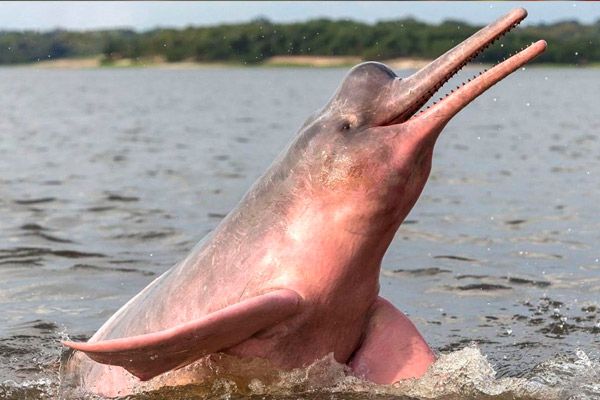New publications
A new species of dolphin has been added to the dolphin family.
Last reviewed: 02.07.2025

All iLive content is medically reviewed or fact checked to ensure as much factual accuracy as possible.
We have strict sourcing guidelines and only link to reputable media sites, academic research institutions and, whenever possible, medically peer reviewed studies. Note that the numbers in parentheses ([1], [2], etc.) are clickable links to these studies.
If you feel that any of our content is inaccurate, out-of-date, or otherwise questionable, please select it and press Ctrl + Enter.
American biologists studying the nature of the Bay of Bengal near the coast of India and Bangladesh accidentally discovered a new species of dolphins. The "new" representatives of cetaceans have much in common with the common species of Chinese humpback dolphins and bottlenose dolphins. Scientists compared the DNA of these representatives of marine fauna and came to the conclusion that at the gene level, the listed populations have significant differences from other dolphins that live in the waters of the Pacific and Indian Oceans.
World scientists note that this discovery was predictable, since the water area of the Bay of Bengal is separated from other large and small water bodies, and is still poorly studied. Perhaps, soon specialists will be able to please the world with other new discoveries.
A few years ago, biologists were close to finding a unique river shark in the waters. This shark had external features that characterize both a sea dweller and a freshwater creature. However, at that time, scientists were still unable to clarify the features of this discovery.
"Based on the results of our research, it becomes clear that there is a well-founded pattern between the richness of various dolphin populations and the unique living conditions of the Bay of Bengal. A biologically diverse and isolated from other bodies of water marine landscape can favor the emergence of new species of marine fauna," - this is the commentary on the discovery left by biologist Anna Amaral, who took part in the study. More information was provided by researchers from the US Museum of Natural History of Nature Conservation in a detailed scientific paper published in the periodical Conservation Genetics.
Until now, science has had information about 37 species of dolphins, divided into 17 genera. However, since research is conducted everywhere, data on the dolphin family is constantly being supplemented. For example, not long ago, scientists found out that the level of intellectual development of dolphins significantly exceeds that of humans.

Most dolphins on the planet choose tropical and subtropical latitudes for their habitat. But there are also species that feel great in cool waters, so they can be found closer to the Arctic. There are also a number of universal dolphins. For example, white-beaked dolphins are often found in the waters of the North Atlantic, but they can also be seen periodically off the Turkish coast.
Such discoveries as a new species of dolphins are very important at the present time. Thus, if earlier these representatives of cetaceans could often be found in nature, now dolphins are losing their habitats everywhere – due to unfavorable ecology, lack of conditions for reproduction, due to small amounts of food and other factors. Most dolphin populations are now on the verge of extinction, and therefore are listed in the Red Book.
